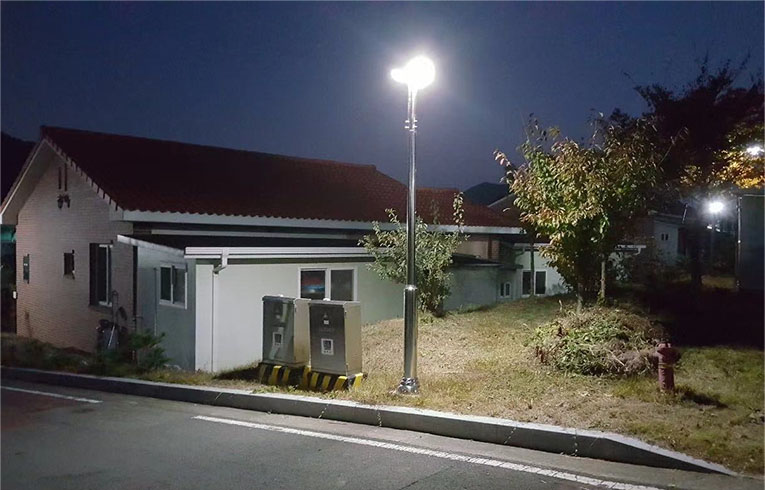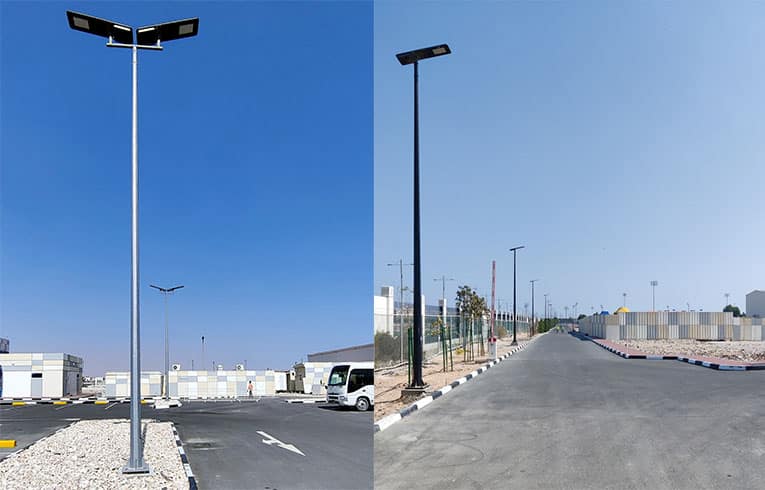What is light pollution?
Light pollution, also known as photopollution or luminous pollution, is the excessive, misdirected, or intrusive use of artificial light at night. It occurs when outdoor lighting from streetlights, buildings, advertising signs, and other sources interferes with the natural darkness of the night sky and disrupts ecosystems.
The Effects of Light Pollution
Light pollution has numerous adverse effects on the environment, wildlife, and human health. Here are some of the key impacts of light pollution:
1. Environmental effects:
-
Energy waste: Excessive and inefficient lighting consumes a significant amount of energy, contributing to increased greenhouse gas emissions and climate change. Reducing light pollution can help conserve energy and reduce our environmental impact.
-
Skyglow: The brightening of the night sky over inhabited areas due to artificial light makes it difficult to observe stars and celestial objects. This diminishes the beauty of the night sky and hinders astronomical research and observation.
2. Effects on wildlife:
-
Disruption of natural behavior: Many animals rely on natural light-dark cycles for navigation, mating, feeding, and other essential behaviors. Artificial light at night can disrupt these cycles, leading to disorientation, altered migration patterns, and changes in species interactions.
-
Ecosystem imbalance: Light pollution can affect predator-prey relationships, plant growth, and pollination, leading to imbalances within ecosystems. For example, nocturnal insects attracted to artificial lights may become easy prey for predators, while plants that rely on these insects for pollination may suffer.
3. Effects on human health:
-
Sleep disruption: Exposure to artificial light at night, particularly blue light emitted by electronic devices and LED lights, can interfere with the production of melatonin, a hormone that regulates sleep-wake cycles. This can lead to sleep disorders, fatigue, and other health issues.
-
Mental health: Chronic exposure to artificial light at night has been linked to increased stress, anxiety, and depression. Preserving natural darkness is essential for maintaining mental well-being and overall quality of life.
-
Physical health: Disrupted sleep patterns and circadian rhythms have been associated with an increased risk of chronic conditions such as obesity, diabetes, and cardiovascular disease.
4. Safety and visual discomfort:
-
Glare: Excessive brightness from poorly designed or directed lighting can cause discomfort or impair vision. Glare is particularly dangerous when driving or walking at night, as it reduces visibility and increases the risk of accidents.
-
Light trespass: Unwanted or intrusive light that spills over onto neighboring properties or into areas where it is not needed can invade privacy and create a nuisance for residents.

Benefits of LED Lights as an Alternative to Incandescent Lighting
LED (Light Emitting Diode) lights offer several advantages over traditional incandescent lighting, making them an attractive alternative for various applications.
1. Energy efficiency: LED lights consume significantly less energy than incandescent bulbs, typically using about 75% to 80% less electricity. This reduced energy consumption translates to lower electricity bills and a smaller carbon footprint, contributing to environmental sustainability.
2. Longer lifespan: LED lights have a much longer lifespan compared to incandescent bulbs, lasting up to 25 times longer. This extended lifespan reduces the need for frequent replacements, saving money on maintenance costs and reducing waste.
3. Durability: LED lights are more durable and resistant to breakage than incandescent bulbs because they do not contain fragile filaments or glass enclosures. This makes them suitable for various environments, including those with vibrations, impacts, or temperature fluctuations.
4. Instant brightness: Unlike compact fluorescent lights (CFLs), which may require a warm-up period to reach full brightness, LEDs achieve full illumination instantly when switched on. This can be particularly advantageous in situations where immediate lighting is required.
5. Dimmable: Many LED lights are compatible with dimmer switches, allowing users to adjust the brightness levels according to their preferences and needs. This feature contributes to energy savings and enhances the versatility of LED lighting in different settings.
6. Directional lighting: LED lights emit light in a specific direction, reducing the need for reflectors and diffusers to trap and direct light. This characteristic makes LEDs more efficient for tasks and accent lighting, as less light is wasted or dispersed in unwanted directions.
7. Color variety: LEDs are available in a wide range of colors without the need for color filters, providing increased design flexibility for various applications, such as decorative lighting, architectural accents, and signage.
8. Environmentally friendly: LED lights are free of toxic materials, such as mercury, which is found in CFLs. This makes them more environmentally friendly and easier to dispose of at the end of their lifespan. Additionally, the reduced energy consumption of LED lights contributes to lower greenhouse gas emissions.
Methods for Reducing Light Pollution with LED Streetlights
Reducing light pollution with LED streetlights involves a combination of strategic planning, proper lighting design, and the implementation of adaptive control technologies. Here are some methods to minimize light pollution while using LED streetlights:
1. Shielding and full cutoff fixtures: Utilize fully shielded or full cutoff fixtures that direct light downward and prevent it from being emitted upwards or horizontally. This helps to reduce skyglow and light trespass, ensuring that the light is focused only on the intended area.
2. Appropriate illumination levels: Choose LED streetlights with appropriate brightness levels for the specific location and application. Over-illumination contributes to light pollution and wastes energy. Following the guidelines provided by the Illuminating Engineering Society (IES) can help determine the suitable lighting levels for different situations.
3. Warm color temperatures: Opt for LED streetlights with warmer color temperatures (below 3000K), which emit less blue light. Blue-rich light has been linked to increased skyglow and potential health concerns. Warmer color temperatures produce a more natural-looking and less harsh light, minimizing the impact on the environment and human health.
4. Dimming and adaptive controls: Implement dimming capabilities or adaptive controls such as timers and motion sensors for LED streetlights. This allows the lights to be adjusted according to the time of day, traffic conditions, or actual usage, saving energy and reducing unnecessary light pollution.
5. Proper spacing and height: Ensure that LED streetlights are installed at appropriate heights and spaced correctly to avoid over-illumination and light trespass. Proper spacing and height contribute to uniform lighting distribution, enhancing visibility and safety while minimizing light pollution.
6. Regular maintenance: Perform regular maintenance and cleaning of LED streetlights to maintain their efficiency and ensure that they continue to function optimally. Dirty or damaged fixtures can result in increased glare and light pollution.
7. Community planning and awareness: Collaborate with local communities, planners, and decision-makers to raise awareness about light pollution and its impacts. Encourage the adoption of responsible lighting practices and policies to minimize light pollution in urban and suburban areas.
8. Dark-sky friendly certifications: Consider using LED streetlights that have been certified as dark-sky friendly by organizations such as the International Dark-Sky Association (IDA). These products are designed to minimize light pollution while providing adequate and efficient illumination.

Potential Issues with LED Street lights
While LED streetlights offer numerous advantages, including energy efficiency, longer lifespan, and environmental benefits, they can also present some potential issues if not properly designed or installed. Here are a few common concerns associated with LED streetlights:
1. Glare: If LED streetlights are too bright or improperly aimed, they can produce excessive glare, making it difficult for pedestrians and drivers to see clearly. This can be particularly dangerous at night, as it may increase the risk of accidents.
2. Light trespass: Poorly designed or installed LED streetlights can result in light trespass, where unwanted or intrusive light spills over onto neighboring properties or into areas where it is not needed. Light trespass can disturb sleep, invade privacy, and create a nuisance for residents.
3. Blue-rich light and color temperature: Some LED streetlights emit a higher proportion of blue light compared to traditional streetlights. Blue-rich light has been associated with increased skyglow, disruption of wildlife behavior, and potential health concerns for humans, such as disrupted sleep patterns. Additionally, cooler color temperatures (higher Kelvin values) can result in harsher, less natural-looking light, affecting color rendering and aesthetics.
4. Color rendering: While LED technology has improved significantly in recent years, some LED streetlights may still have suboptimal color rendering capabilities, making colors appear less vibrant or accurate compared to natural daylight. Poor color rendering can affect visibility, aesthetics, and the overall quality of the illuminated area.
5. Flicker: Some LED streetlights may exhibit flickering or stroboscopic effects due to fluctuations in the electrical current. While this flicker may not be noticeable to the naked eye, it can cause discomfort, eyestrain, or even trigger migraines or epileptic seizures in sensitive individuals.

Tips for Implementing LED Streetlights in Your Community
Implementing LED streetlights in your community can lead to significant energy savings, reduced maintenance costs, and improved visibility and safety. Here are some tips to help ensure a successful transition to LED streetlights:
1. Assess the current lighting situation: Conduct a thorough audit of the existing streetlights in your community, including their type, wattage, location, and condition. This assessment will help identify areas where improvements are needed and provide a baseline for comparison with the proposed LED streetlights.
2. Develop a comprehensive plan: Create a detailed plan outlining the objectives, budget, timeline, and implementation strategy for the LED streetlight project. This plan should include an analysis of potential energy savings, maintenance cost reductions, and environmental benefits.
3. Engage stakeholders: Involve key stakeholders, such as local government officials, utility companies, residents, and business owners, in the planning and decision-making process. This will help build consensus and support for the project while addressing any concerns or objections.
4. Choose high-quality LED streetlights: Select LED streetlights that meet or exceed industry standards for performance, efficiency, and durability. Consider factors such as energy efficiency, color temperature, color rendering index (CRI), lifespan, and warranty when making your selection.
5. Prioritize proper lighting design: Ensure that the LED streetlights are installed at appropriate heights and spaced correctly to provide uniform illumination while minimizing glare, light trespass, and light pollution. Utilize full cutoff or shielded fixtures to direct light downward and consider dimming capabilities or adaptive controls for additional energy savings.
6. Pilot program: Implement a pilot program by installing LED streetlights in a small area of your community to evaluate their performance, gather feedback from residents, and make any necessary adjustments before expanding the project.
7. Secure funding: Explore various funding options for the LED streetlight project, such as grants, low-interest loans, public-private partnerships, or utility incentive programs. This will help minimize the upfront costs and ensure a more rapid return on investment.
8. Educate the community: Raise awareness about the benefits of LED streetlights and the importance of responsible lighting practices to reduce light pollution. Provide information on the project’s progress, energy savings, and environmental impact to maintain support and enthusiasm for the initiative.
9. Monitor and evaluate: Continuously monitor and evaluate the performance of the LED streetlights after installation. Regular maintenance and timely repairs will help ensure optimal efficiency, safety, and longevity.
Conclusion
Taking all of this into consideration, it’s evident that LED streetlights offer tremendous potential for reducing the impact of light pollution while also being more cost-effective and efficient than traditional street lighting solutions. Implementation of LED technology in the form of streetlights can be a simple solution to improving energy consumption, visibility, and livability of public areas. The transition process is relatively straightforward, with most tasks suitable for any municipality—though considerable environmental benefits may require large-scale LED installations.
If your community is seeking a sustainable lighting system that will save energy and reduce light pollution while providing even illumination and great visibility, LED street lighting is an excellent choice. There’s never been a better time to switch out those outdated incandescent lights for good! Municipalities interested in making the transition should look into our comprehensive selection of LED lights today – contact our product managers for more professional sourcing solutions!
Table of Contents